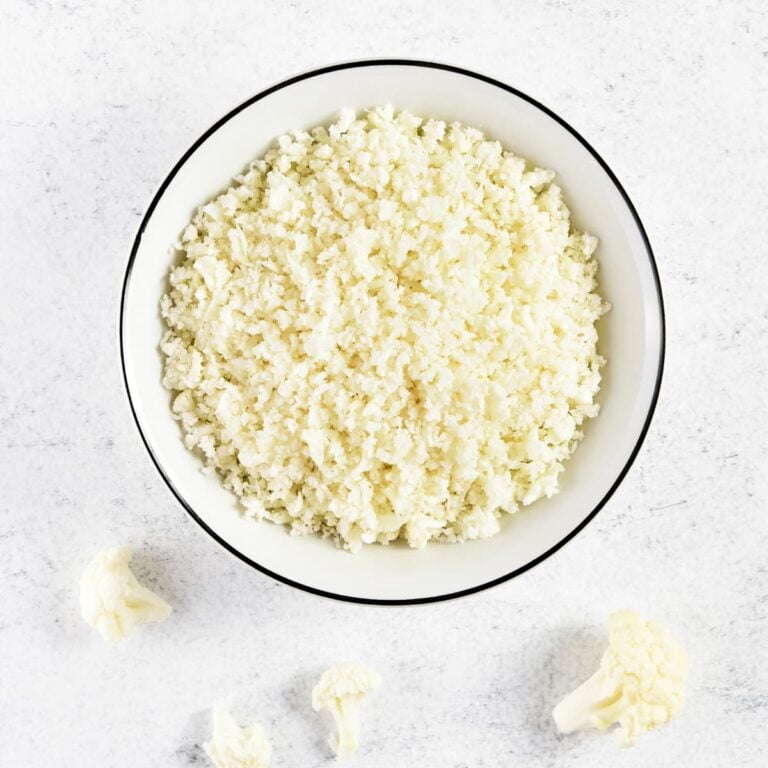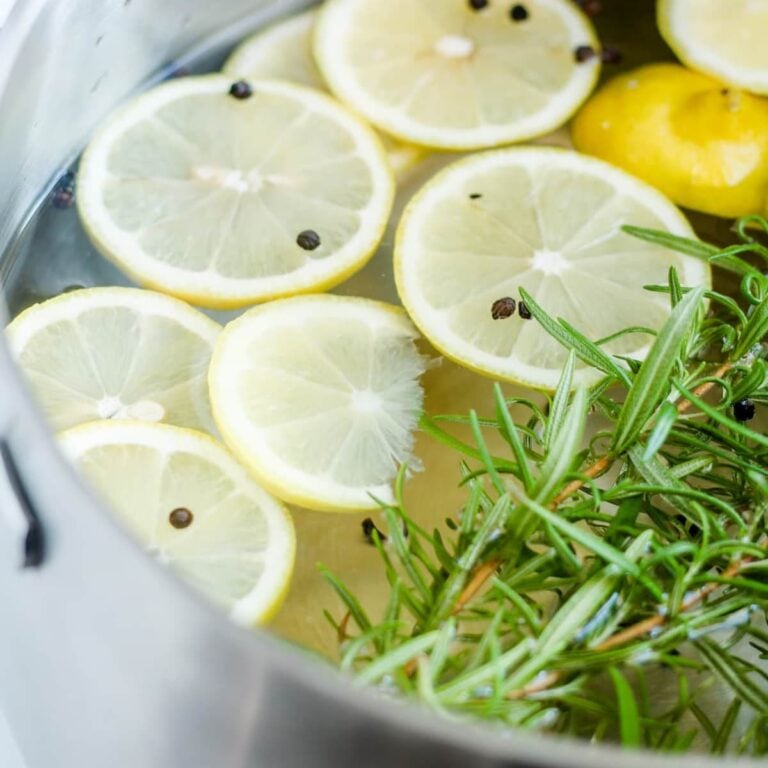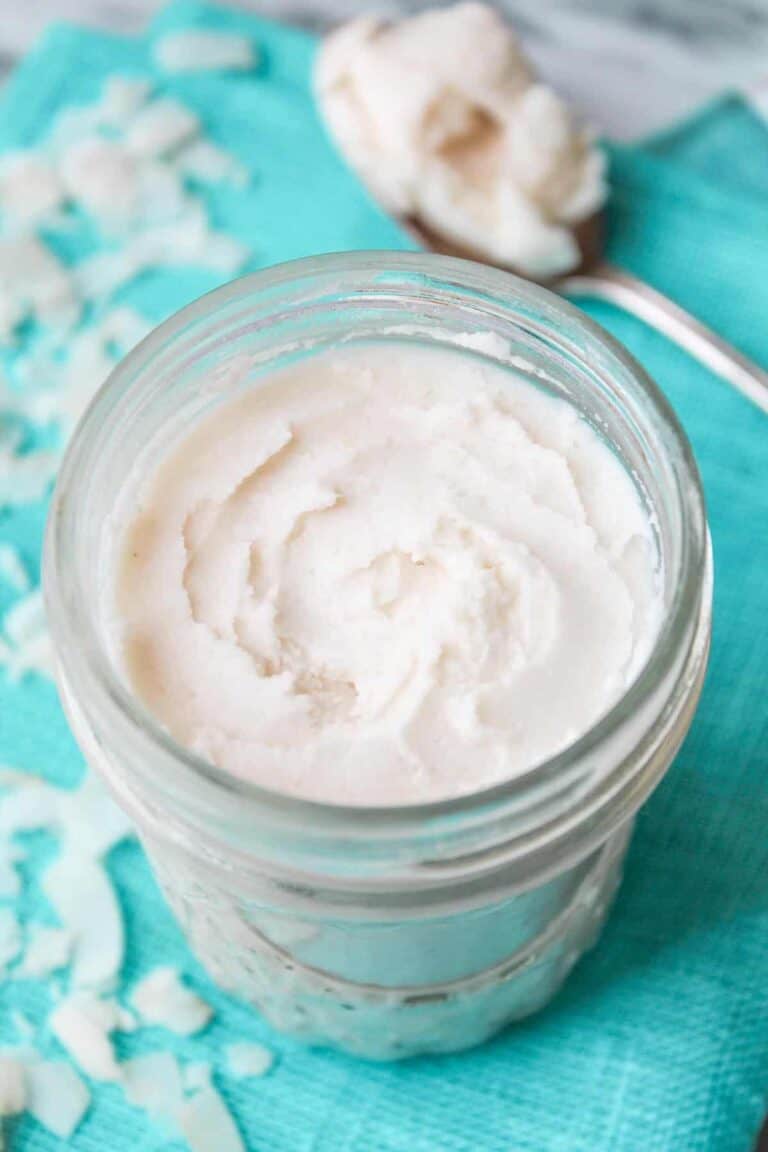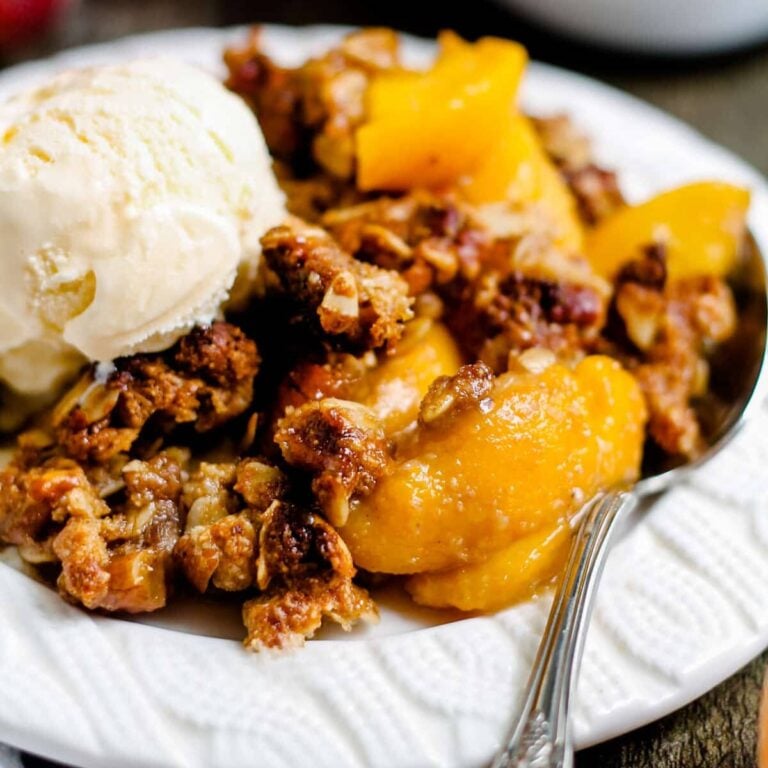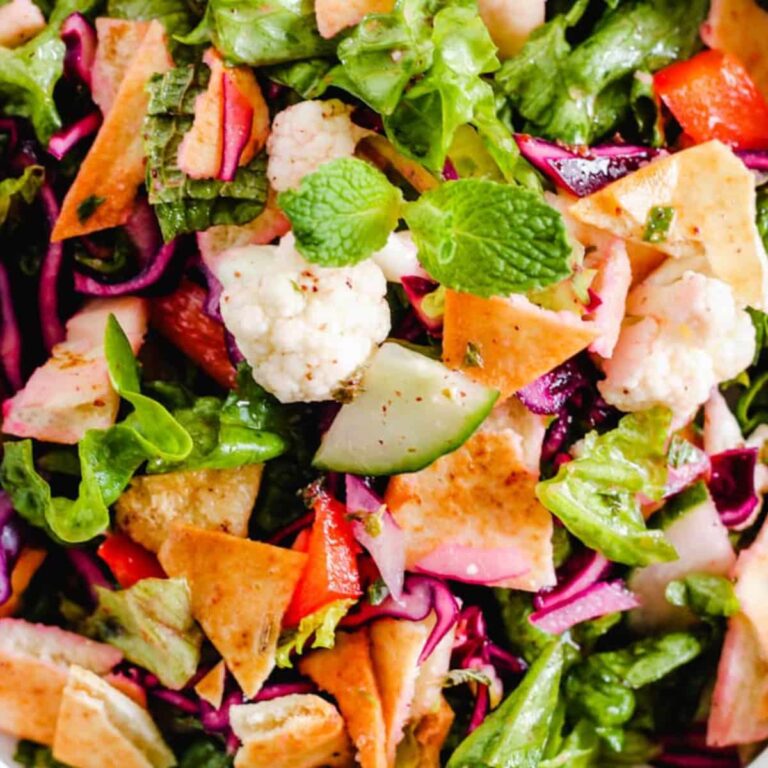How to Freeze Blueberries
That first taste of a farm-fresh blueberry in the middle of summer transports you to childhood when you enjoyed those fresh and juicy berries by the handful. Learn how to freeze blueberries so you can enjoy this magic all year round.
As an Amazon Associate, I earn from qualifying purchases.

Blueberries are delicious and healthy, full of sweet flavor, and packed with antioxidants and vitamins. They are low in calories and fat and contain a decent amount of fiber. Freezing blueberries is a great way to preserve your summer bounty and reduce waste.
What makes freezing blueberries hard?
If you simply toss your blueberries in the freezer, you are bound to have issues. Even when you purchase store-bought frozen berries, they are often mushy when you thaw them.
Blueberries, like most fruits and veggies, are made up primarily of water. In fact, according to Healthline, blueberries are 84% water.
As water freezes, it expands, which bursts the cell walls, especially if they are already weak. When you thaw the blueberries, you end up with mush. Choosing the right blueberries and using the right technique, however, helps retain more of the original flavor and texture that you want.
What are the best blueberries to freeze?
The best fresh blueberries to freeze are small, wild blueberries often found at a farmers’ market or local fruit stand during the summer months – aka blueberry season. They maintain their texture better than the larger blueberries you typically see in the grocery store.
However, you can still successfully freeze the traditional blueberries you purchase. The key is to freeze them when you first purchase them.
You want the freshest blueberries at the peak of summer ripeness when they are as firm as possible with no blemishes or signs of spoilage. The blueberry skin is thickest and most structurally sound at this point, which helps significantly.

How should you prep the blueberries?
Step 1
First, pick off any stems from the berries
Step 2
Before you freeze the blueberries, be sure to wash them gently in cool water. Warm or hot water will damage the skin and make them more prone to becoming mushy.
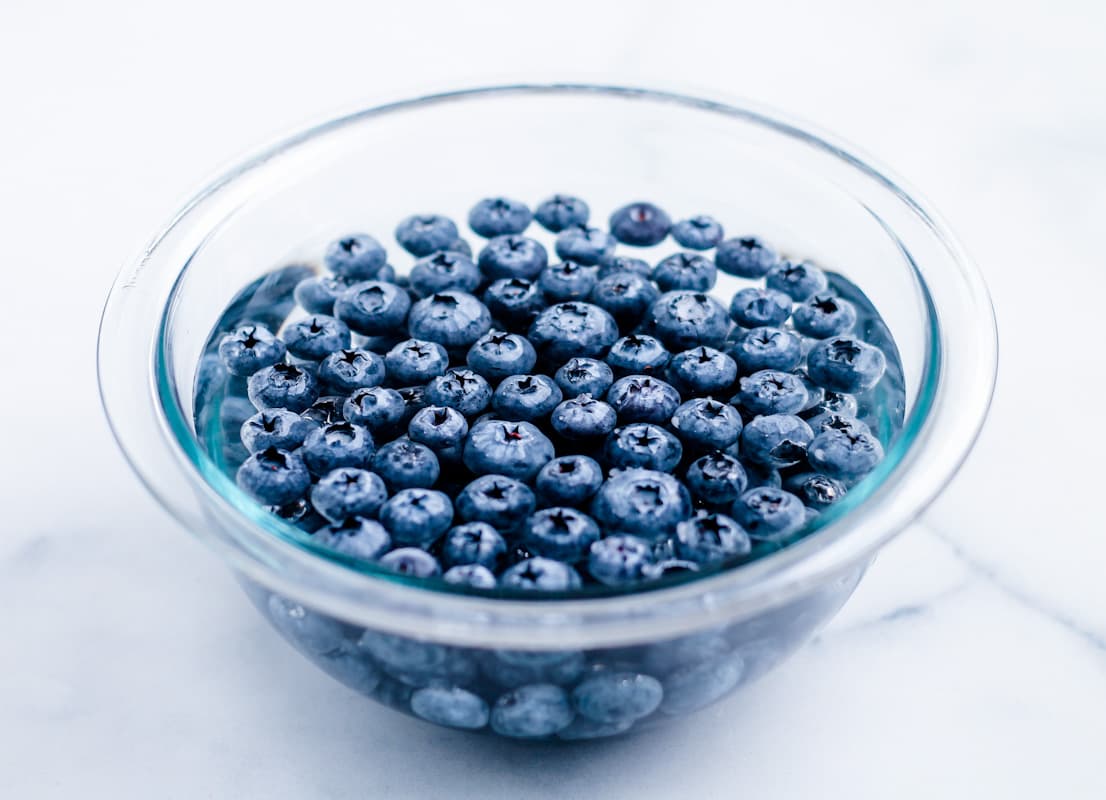
Step 4
Be sure to pat them dry before you freeze them. Any moisture on the outside of the blueberry turns to ice and makes them more prone to losing the texture you want to maintain.
The easiest way to do this is to place them on a clean dish towel or a double layer of paper towels, then gently and carefully roll them to dry them thoroughly. Depending on how many blueberries you wash, you may need to change out your paper towels. Be sure to be gentle during this step, as you do not want to damage the blueberries at all.
Alternatively, you can set them on a double layer of paper towels and let them rest for 10 to 20 minutes, then change out to new paper towels and ensure they dry completely.
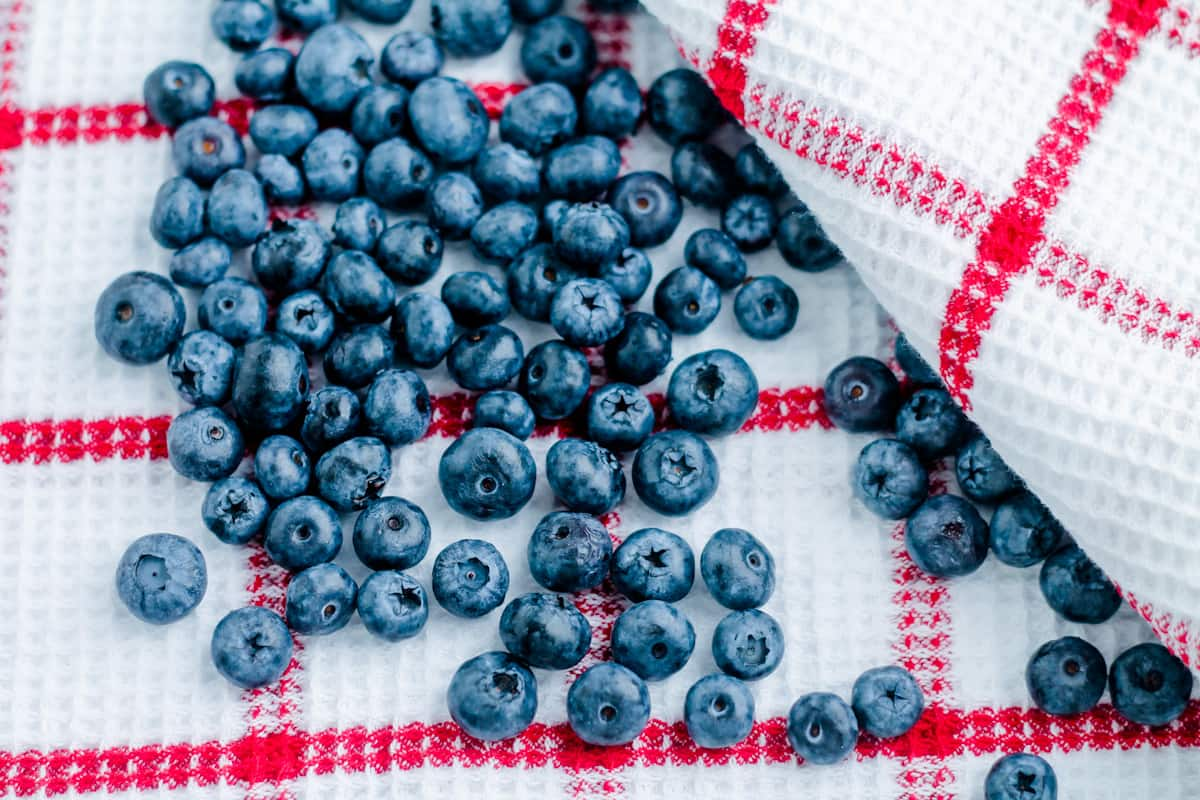
You do not need to use all the fancy fruit and vegetable washes and sprays you can buy. Just water cleans them adequately, but you can also use three parts water mixed with one part vinegar, mix a tablespoon of 3 percent hydrogen peroxide with a gallon of water, or combine a teaspoon of salt with a cup of water to clean your produce.
“I have three blueberry bushes, so I freeze a lot of berries. Just wash them in baking soda mixed with vinegar to get the dirt off. This also inhibits bacteria. Rinse them well and lay them out on a kitchen towel to dry.”
— Jere’ Cassidy, One Hot Oven
What is the best way to freeze blueberries?
Step 5
Place your clean blueberries on a rimmed baking sheet lined with parchment paper. The parchment paper helps to ensure the blueberries don’t freeze to the metal pan and get damaged, while the sides of the pan ensure the berries don’t roll off when you move the sheet pan to and from the freezer.
Keep the blueberries in a single layer, and do not pack them in or stack them. You are better off freezing a second tray where the blueberries have space between them than trying to get them all onto one sheet.
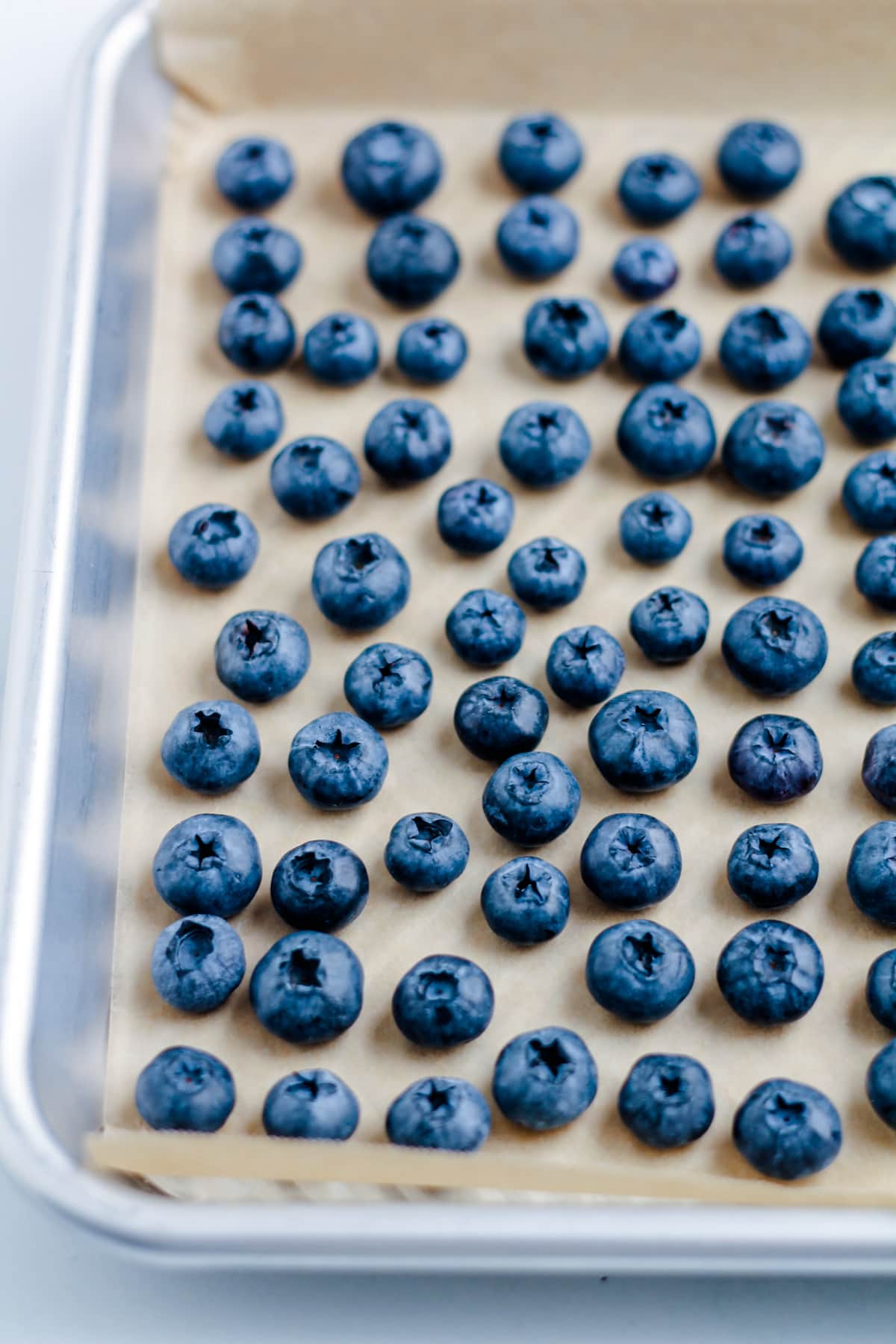
Step 6
Place your pan in your freezer for two to three hours, until the blueberries are completely frozen.
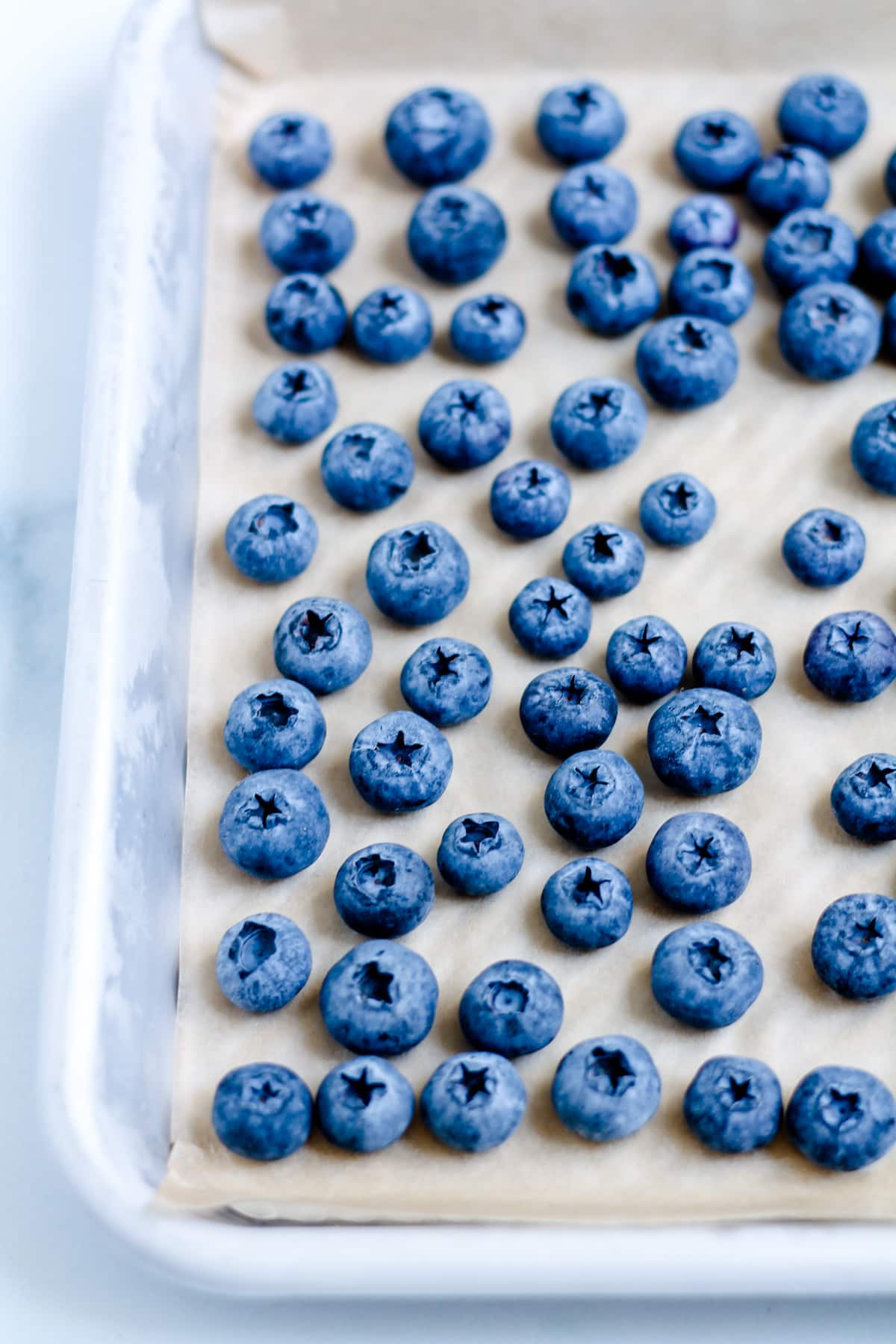
Step 7
Once frozen, place them in a zip-top freezer-safe bag with as much air removed as possible, then double-bag them.
The double bagging in Ziploc bags helps keep them from getting freezer burn and also protects their texture for longer. If you have a vacuum sealer, this is a great time to use it.
Be sure to label your freezer bag with the date you froze your blueberries. They will last in the freezer for up to six months.

How can you use frozen blueberries?
Frozen blueberries are great to add to any recipe that calls for blueberries or simply enjoy them by themselves.
Frozen berries are perfect for smoothies like this Blueberry Oatmeal Smoothie or this Blueberry Spinach Smoothie.
When you bake recipes like a blueberry streusel coffeecake or sour cream blueberry muffins, or Almond Flour Blueberry Almonds, be sure to add them to the batter while they are still frozen. While you might need to add a couple of extra minutes to the cooking time, they maintain their texture better when you don’t thaw them first and try to mix them into the batter.
For recipes like a blueberry crumble bar, blueberry pie, or blueberry sauce, it matters less if you thaw them before you add them to your recipe or not.
However, if you make a fruit salad or plan to use the blueberries to make blueberry pancakes or waffles — or anything with a short cook time — be sure to thaw them first. Thawed berries are also better for something like this super simple Blueberry Chia Jam.
“Freezing blueberries is so easy and it’s a great way to preserve the flavors of summer all season long. I love frozen blueberries with a square or two of chocolate for a late night snack.”
— Renee Gardner, Renee Nicole’s Kitchen
How should you thaw frozen blueberries?
The way you thaw blueberries is as important to maintaining a good texture as the previous steps. While thawed blueberries will be softer no matter what, they don’t need to become mushy if you thaw them correctly.
The best way to thaw frozen blueberries is to place them in the fridge for at least six to eight hours. Place the blueberries you want to thaw into a container and cover it, then let them slowly thaw. This minimizes the damage to the cell walls that makes them mushy. If you plan to thaw your entire batch, you can move the bag containing them to the fridge and thaw them in that.
If you need them more quickly, you can add them to a bowl of cold water, changing it with more cold water after five minutes or so. You may need to do this two to three times, depending on how many blueberries you want to thaw.
Do not use warm or hot water, as this will cause your blueberries to lose their texture. The same goes for thawing them in the microwave. Just don’t do it.

Final thoughts
By following these simple tips, you can ensure your frozen blueberries retain their firmness and taste as delicious as the day you first picked them. Whether you plan to bake with them or enjoy them as a snack, you’ll love the burst of flavor and freshness properly frozen blueberries offer.
Freeze them now, and enjoy them all year long.
Michelle Price is a food and travel writer at Honest and Truly who almost has an empty nest. She loves to provide both the inspiration and the confidence you need to help get you into the kitchen and on the road to enjoy new flavors and experiences.
This article first appeared on Food Drink Life.

Be sure to follow me on social media! I love pinning to Pinterest, sharing on Facebook, and posting pics on Instagram. See you there. 🙂
As an Amazon Associate, I earn from qualifying purchases.
Want to Save This Recipe?
Just enter your email and get it sent to your inbox! Plus you’ll get new recipes from us every week.
By submitting this form, you consent to receive emails from The Honour System

How to Freeze Blueberries
Ingredients
- 2 cups blueberries *or as many as you want to freeze
Instructions
- Wash the blueberries gently in cool water. Warm or hot water will damage the skin and make them more prone to becoming mushy.
- Place your clean blueberries on a rimmed baking sheet lined with parchment paper.
- Keep the blueberries in a single layer, and do not pack them in or stack them.
- Place your pan in your freezer for two to three hours, until the blueberries are completely frozen.
- Once frozen, place them in a zip-top baggie with as much air removed as possible, then double-bag them.
- Label your bag with the date you froze your blueberries. They will last in the freezer for up to six months.


